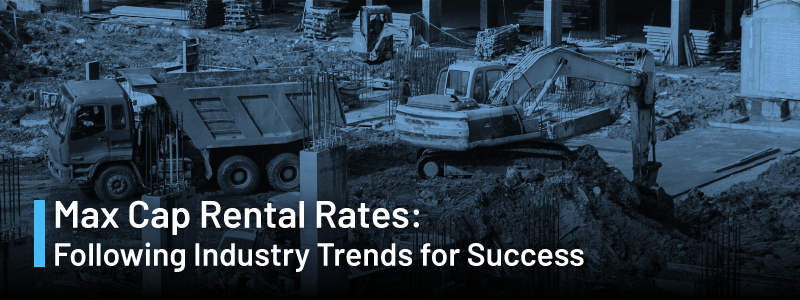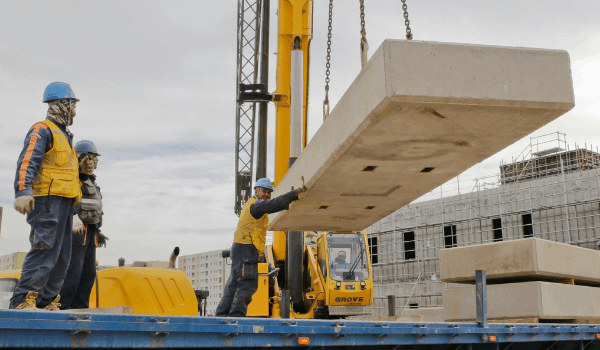
In the construction industry, managing equipment rentals efficiently is crucial for maintaining a competitive edge and ensuring project success. One trend gaining momentum, particularly on the west coast and spreading nationwide, is the incorporation of max cap rental rates in customer agreements. Some construction companies might hesitate to enforce these caps because of potential profit losses, but it is worth considering the benefits of stronger client relationships and following industry trends.
Introduction
As construction projects evolve, client demands are becoming more specific, and one such demand is the incorporation of max cap rental rates in agreements. These rates set a limit on the total amount a customer will pay for renting equipment, providing transparency and preventing unexpectedly high costs. Although this practice can initially seem like it might cut into profit margins, it offers significant long-term benefits by fostering stronger client relationships and ensuring fair pricing. To stay competitive and meet these client needs, construction companies must adapt and integrate this feature seamlessly into their rental management systems.
Benefits of Max Cap Rental Rates
Strengthening Client Relationships
Transparent pricing is a significant factor in building trust with clients. When customers know that there is a max cap on rental rates, they feel more secure and confident in their financial planning. This transparency leads to stronger, long-term relationships with clients, as transparency ensures they will not face exorbitant rental fees. Such customer-friendly policies encourage repeat business and foster loyalty, outweighing the initial perception of profit loss.
Adapting to Industry Trends
The trend of including max cap rental rates in agreements is increasingly prevalent. Companies that fail to adapt may find themselves losing out on bids and projects where this feature is a client requirement. By integrating max cap rental rates into your agreements, you position your company as adaptable and client-focused, increasing your competitiveness in the market.
Ensuring Fair Pricing
While enforcing max cap rental rates might seem like a compromise on immediate profits, it ensures that clients perceive your pricing as fair and transparent. This perception is invaluable in a competitive industry where reputation and trust can significantly influence client decisions. Fair pricing policies not only attract more clients but also enhance your company’s standing in the industry.
Operational Efficiency
From an operational standpoint, max cap rental rates ensure that equipment is not rented out at a loss, optimizing resource allocation. It also aids in better tracking of equipment utilization, ensuring that high-demand equipment does not become a financial burden. This efficiency in resource management contributes to smoother project execution and better overall operational performance.
Risk Management
Financial risks are an inherent part of the construction industry, especially concerning fluctuating rental rates. By implementing max cap rental rates, companies can mitigate these risks. Caps help ensure that the company does not face severe financial strain during peak demand periods. Additionally, they simplify contract management by providing clear terms and conditions related to rental costs, reducing the likelihood of disputes and misunderstandings.
Data-Driven Decision Making
Construction companies rely heavily on data to make informed decisions. Analyzing data on capped rental rates provides valuable insights into rental trends, helping companies make informed decisions about equipment purchases, rentals, and overall fleet management. This feature also assists in accurate financial forecasting and planning, aiding in strategic decision-making and long-term planning.
Compliance and Reporting
Adhering to industry regulations and standards is crucial for construction companies. Max cap rental rates ensure compliance with regulatory requirements that mandate transparent pricing practices. They also facilitate accurate financial reporting and auditing, as capped costs are predictable and easy to track. This transparency is beneficial for maintaining regulatory compliance and providing stakeholders with clear and accurate financial reports.
Implementing Max Cap Rental Rates
To effectively implement max cap rental rates, construction equipment management software should include features such as:
Automatic Alerts: Notifications when rental costs approach the cap limit.
Flexible Pricing Models: Options to set different caps based on equipment type, rental duration, and customer contracts.
Comprehensive Reporting: Detailed reports on rental costs, usage patterns, and cap compliance.
Customer Agreement Integration: Integration with customer contracts to ensure maximum cap rates are consistently applied.
How RentalResult Supports Max Cap Rental Rates
RentalResult understands the evolving needs of the construction industry and offers robust capabilities to seamlessly integrate max cap rental rates into your agreements. Our software ensures that you can easily add these caps, whether defined by a max dollar amount or as a percentage of the original purchase cost of the equipment. Additionally, RentalResult provides comprehensive reporting tools to monitor and manage equipment approaching these rental caps, helping you maintain operational flexibility and client satisfaction.
Conclusion
Incorporating max cap rental rates in construction equipment management software is a strategic move that goes beyond immediate profit considerations. It builds stronger client relationships, ensures fair pricing, and aligns with industry trends. By providing a safeguard against unpredictable costs and fostering transparent pricing practices, max cap rental rates contribute significantly to the success and sustainability of construction operations.
For construction companies looking to stay competitive and meet client needs, investing in software with max cap rental rate capabilities is essential. RentalResult is here to help you integrate this crucial feature, ensuring your operations are prepared for the future demands of the industry. Reach out to us for a demo on how we can integrate our platform into your existing tech stack.




